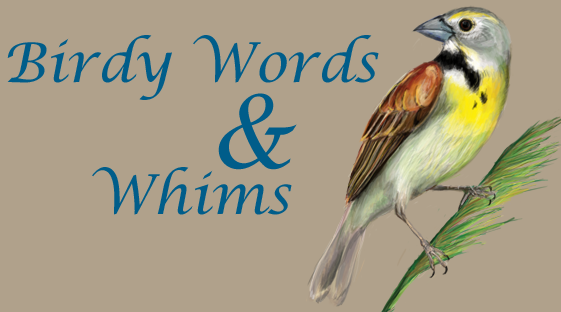 In general, when it comes to age and sex, birds can be rather difficult. The best way of knowing for sure what a bird's sex is, is by getting a DNA sample. And the best way to determine age is if you capture a bird when it's born and then recapture it in successive years. But when it comes to Painted Buntings, there are a lot of clues that you can look for. For instance, we know the above picture is an adult male. In the bird world, it's typical for males to be bold and bright.
In general, when it comes to age and sex, birds can be rather difficult. The best way of knowing for sure what a bird's sex is, is by getting a DNA sample. And the best way to determine age is if you capture a bird when it's born and then recapture it in successive years. But when it comes to Painted Buntings, there are a lot of clues that you can look for. For instance, we know the above picture is an adult male. In the bird world, it's typical for males to be bold and bright. And we know for sure this picture above is a female Painted Bunting. Or is it? Males in their second year of life actually look a lot like the females. They don't molt into their full breeding plumage until their third year!
And we know for sure this picture above is a female Painted Bunting. Or is it? Males in their second year of life actually look a lot like the females. They don't molt into their full breeding plumage until their third year! The best way to tell apart a second year male or female Painted Bunting is to look at its nether regions. The male will typically have a swollen "cloacal protuberance" during the breeding season. In Pabu's, females are the only ones that develop a brood patch, a loss of feathers on the breast and expansion of blood vessels in contact with the eggs during incubation. Sex can be determined in lots of other birds this way, while others don't even give such obvious physical clues that they are breeding.
For even more fun ways to determine age in a Painted Bunting, meet the PABU family...!
 We happened to catch a male, female, and baby all around the same time a few days ago. I'm sure you can tell them apart.
We happened to catch a male, female, and baby all around the same time a few days ago. I'm sure you can tell them apart. This is the smallest babiest of baby buntings!! It doesn't get much fresher from the nest than this. This baby is still growing in all his feathers and doesn't even have a tail yet! Of course, the first thing he does is fly into one of our nets. But his mom was close by his side and they both flew away together just fine.
This is the smallest babiest of baby buntings!! It doesn't get much fresher from the nest than this. This baby is still growing in all his feathers and doesn't even have a tail yet! Of course, the first thing he does is fly into one of our nets. But his mom was close by his side and they both flew away together just fine.And now a little bit about bird wings. If you really want to know your stuff about how to tell the age of a bird in hand, feel free to buy a Pyle guide. If you don't want to spend the money though I'll give a little introduction. Bird wings can be great for telling the age of the bird since a lot of birds follow a specific pattern in how and when they molt their wing feathers. For PABUs, we look at the coloration on their feathers since it varies by age. Look at the differences in the below picture.

All painted buntings are born with brownish gray wing feathers. Over time, the females grow in all green-edged flight feathers and the males get bright green and red feathers. Birds in their second year keep some of their old baby feathers while they are growing adult feathers.

The more accurately we are able to determine age in birds gives us more information on just how long wild birds live. So it's good to have these skills. But while it may be relatively easy to do for Painted Buntings, it is a much different story for a lot of other birds! This summer I have definitely learned a lot, but it still takes a lot of training to know your bird molts.



1 comment:
Loving the educational tidbits!
Kathleen C
Post a Comment